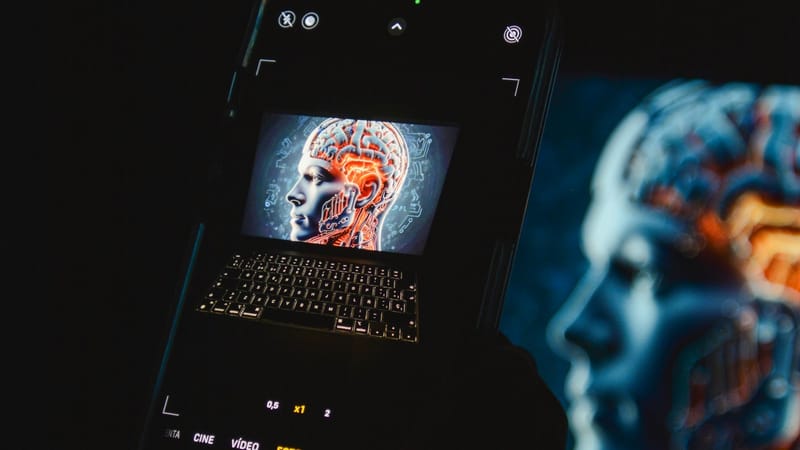Lilly’s AI Factory Could Redefine How We Make Medicine

The pharmaceutical giant Eli Lilly just switched on what it calls the world’s largest AI factory for drug discovery, powered by 1,016 NVIDIA Blackwell Ultra GPUs. Announced at NVIDIA’s GTC event in Washington, D.C., the new facility is built to tear down one of medicine’s biggest barriers: time.
By training foundation models on Lilly’s proprietary biomedical data, the company aims to cut the years-long process of identifying and testing potential treatments to something closer to months. If it succeeds, it could reshape how new drugs reach patients and how biotech firms access the computational power to develop their own.
What Is Lilly’s AI Factory and How Does It Work
At its core, the factory is a purpose-built computing cluster that combines the new Blackwell architecture with NVIDIA DGX SuperPOD systems. Lilly owns the entire stack of hardware, software, and data, making it the largest AI facility wholly controlled by a single pharmaceutical company.
The platform is designed to train large biomedical models for molecular design, genomics, and chemistry. These models will power Lilly TuneLab, an internal system that allows Lilly’s partners and selected biotech companies to access AI tools built on its proprietary datasets.
Thomas Fuchs, Lilly’s chief AI officer, called the project a shift in how science happens inside the lab. “Our foundation models are spawning new possibilities for our chemists,” he said in NVIDIA’s announcement. “AI gives us the means to accelerate progress toward both developing and delivering better, more personalised and targeted medicines.”
Why NVIDIA Is Powering the Next Generation of Biotech
The Blackwell Ultra GPU sits at the heart of this operation. It is NVIDIA’s newest chip family, designed for the large language models, multimodal simulations, and scientific workloads that drive generative discovery.
For NVIDIA, the partnership with Lilly demonstrates its idea of the AI factory model: a repeatable industrial framework that turns raw data and compute into continuous output. The same concept underpins efforts in automotive design, energy modelling, and robotics, but healthcare, with its vast datasets and enormous R&D costs, is where the stakes are highest.
How AI Factories Could Transform Drug Discovery
Drug discovery has always been a slow, costly race between chemistry and uncertainty. Every molecule must be tested for safety, efficacy, and manufacturability, which can take more than a decade before reaching a patient. AI models trained on biomedical data can now simulate and optimise molecules before they ever reach a lab bench.
Lilly’s AI factory compresses that timeline by using generative modelling and reinforcement learning to propose, test, and refine chemical structures. The result could be fewer failed experiments and faster breakthroughs in personalised medicine.
Diogo Rau, Lilly’s chief information and digital officer, put it bluntly: “If you focus only on science, you’re just going to have an experiment, a paper or a treatment. What we’re doing is building a scalable system that turns those into medicines.”
What It Means for Patients and Investors
For patients, faster discovery means more accessible precision medicine tailored to genetic and molecular profiles. Personalised cancer therapies, metabolic treatments, and rare-disease drugs could move from concept to clinic far faster than before.
For investors, the signal is scale. Lilly’s AI factory is part of a $50 billion investment in U.S. manufacturing and R&D, including the planned Lilly Medicine Foundry in Indiana, which is expected to add about 500 jobs. The move shows that big pharma is no longer outsourcing AI. It is building it in-house and treating data infrastructure as a core business asset.
For NVIDIA, the collaboration strengthens its dominance in scientific computing. Every new AI factory reinforces its ecosystem, increasing demand for GPUs, CUDA, and orchestration tools that make high-performance AI practical outside traditional tech.
How AI-Driven Medicine Fits Into the Future of Healthcare
AI in healthcare has often been hyped, but Lilly’s move is less about hype and more about scale. The company is treating discovery as an industrial process rather than a one-off research project. By standardising data pipelines, model training, and simulation environments, it aims to make R&D continuous instead of episodic.
Competitors such as Roche, Novartis, and Pfizer have invested heavily in AI labs, but none have deployed a vertically integrated facility of this magnitude. Lilly’s new build may push peers to accelerate, creating an arms race in computational biology similar to what cloud computing did for software a decade ago.
What Are the Risks of Relying on AI for Drug Design
Speed can amplify bias. Biomedical data is often incomplete and skewed toward certain populations, which means AI models can inherit those blind spots. If training data underrepresents specific genetic or demographic groups, the drugs generated may perform unevenly across populations.
Transparency is another concern. Regulators such as the FDA are still working out how to assess AI-generated compounds. The more automated the discovery process becomes, the harder it is to explain why a model made a specific choice or whether it can be trusted.
Lilly’s leadership says its focus on responsible AI and human oversight will mitigate those risks. The company is betting that governance can evolve alongside innovation.
Why This AI Factory Is More Than a Science Project
Lilly’s new facility is not a lab with faster servers. It is a statement about what modern pharma believes it must become: a data company that makes drugs.
For NVIDIA, it is proof that AI infrastructure is becoming the backbone of every knowledge industry. The same GPU clusters that generate art or drive autonomous cars now power the algorithms that model the chemistry of life. The result is not just faster computing but a new kind of industrial revolution built on intelligence itself.






